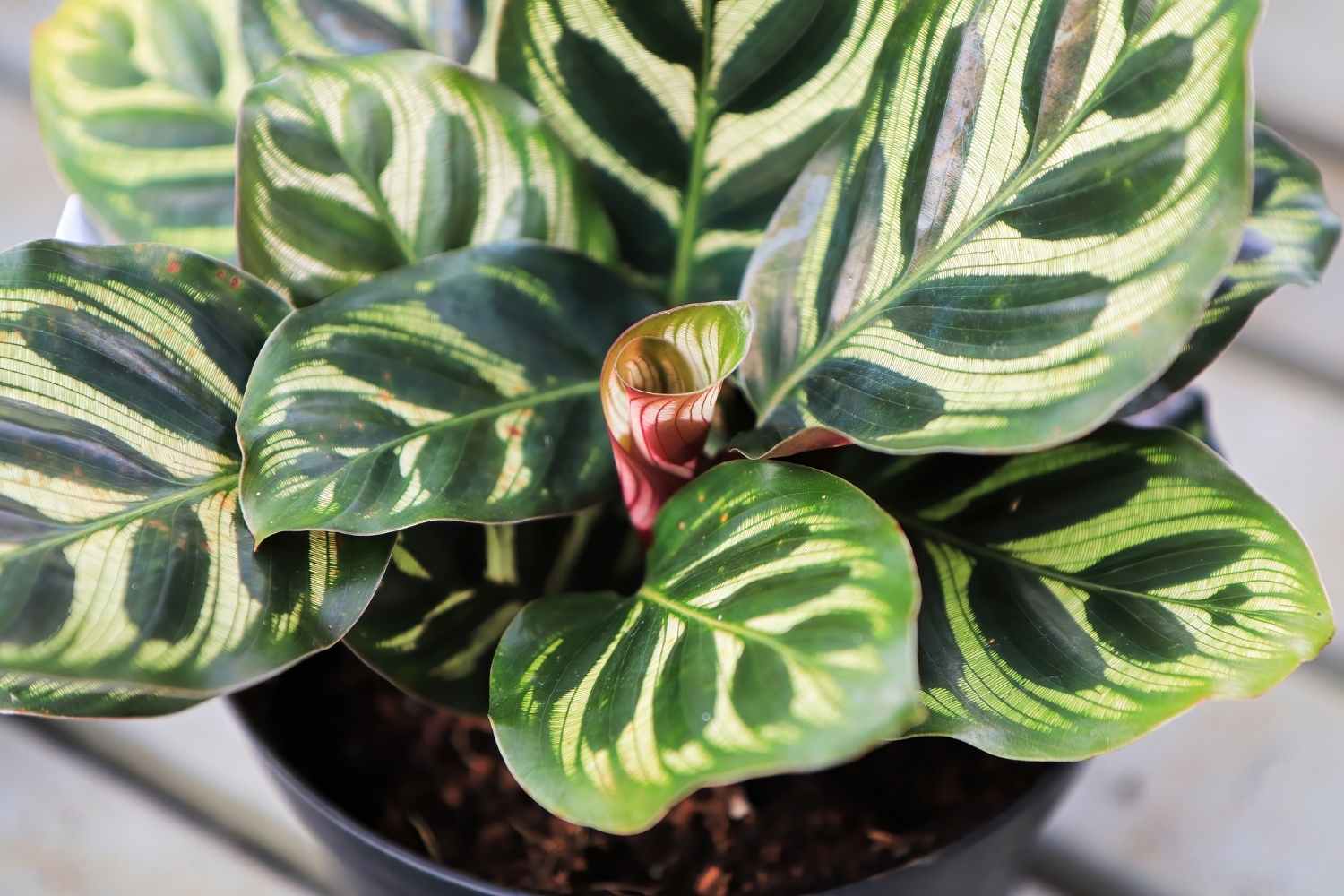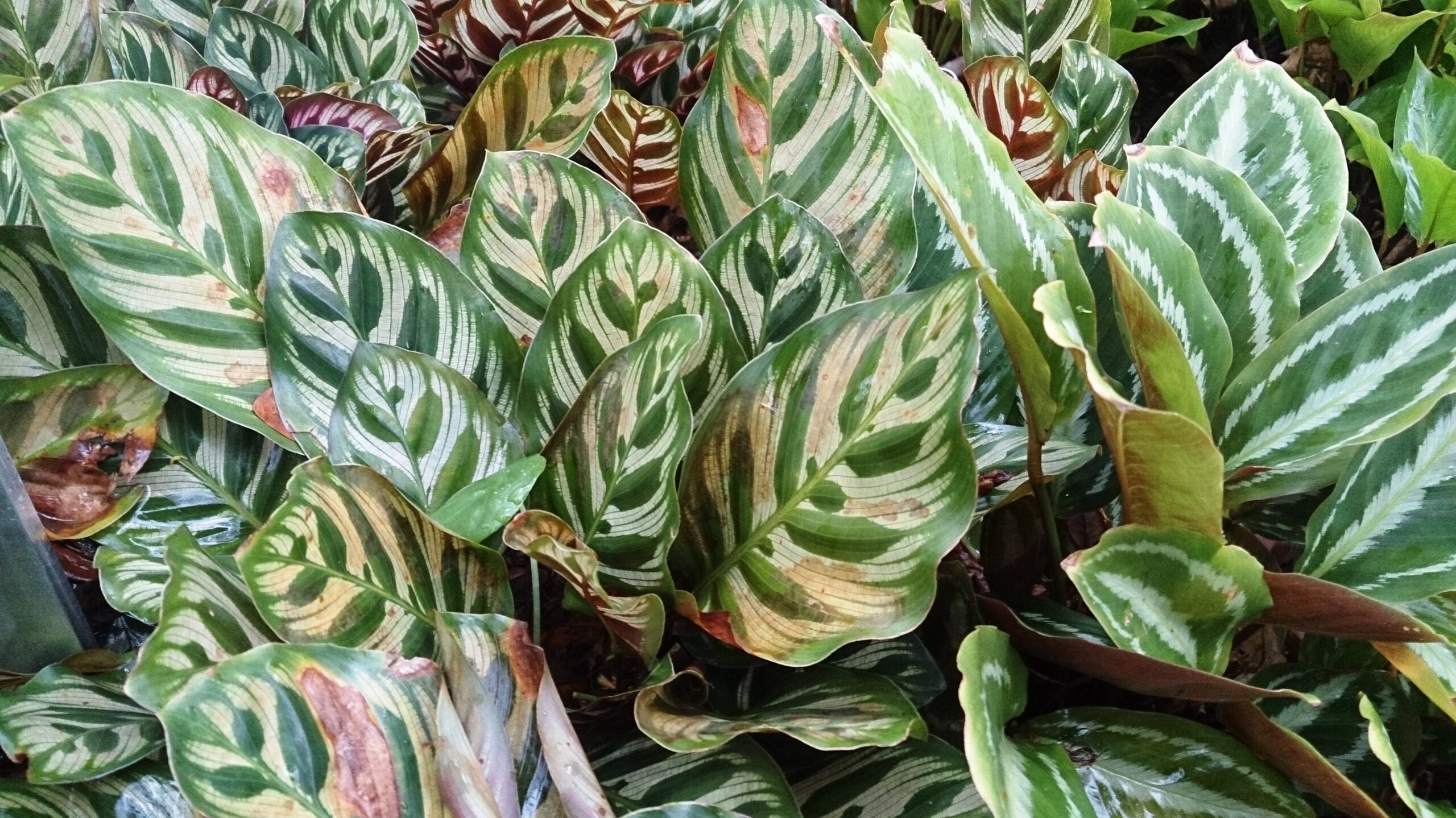Calathea Peacock Plants: Complete Indoor Plant Care & Growing Guide
Also referred to as Goeppertia makoyana, peacock plant, and cathedral home windows, this plant is a number of Calathea plants. It’s a popular houseplant we know of because of its gorgeous foliage. Ideal for inside as it can certainly grow effectively in normal room conditions. This plant could be a great decor element along with a creative method to incorporate nature into the space.
Just provide proper growing conditions and take proper care of them, and that’s all they have to come to be beautiful plants. Are you currently thinking about buying this plant or would like to learn more relating to this beautiful plant? If so, keep studying.
Today within this blog, we will explain everything about calathea peacock plants. In the right conditions to develop these to how to get proper care of them correctly so when to report them, we’ve incorporated everything. So let’s begin with its species and varieties.
What is Calathea Peacock?

Recognized for their gorgeous wide, eco-friendly, colorful leaves, these peacock plants can certainly grow inside. Similar to the bird Peacock, this vegetation is also very popular worldwide. Because they are low-light plants, they’re great for indoor purposes. That’s why everyone loves their services at home and offices.
Lots of people, including gardeners and non-gardeners, are fascinated with this plant due to its watermelon-like leaf pattern and also the contrasting maroon-crimson. All of these features get this plant really attractive.
Are you aware that calathea peacock plants also won an award? Yes, indigenous to Espírito Santo condition of eastern South America, this popular houseplant has acquired the Royal Horticultural Society’s Award of Garden Merit. Let’s learn more relating to this unique-searching plant.
Here’s a short table about everything associated with the calathea peacock plant:
| Botanical Name: Calathea Makoyana |
| Common Name: Peacock Plant or Cathedral Windows |
| Plant Type: Evergreen, Herbaceous, Perennial |
| Family: Calathea |
| Native Area: Eastern Brazil |
| Mature Size: Up to 4 ft. tall |
| Sun Exposure: Partial Sun, Full Shade |
| Soil Type: Moist but well-drained |
| Soil pH: Acid, Neutral, Slightly Alkaline |
| Bloom Time: Anytime, but flowers are small |
| Flower Color: White |
| Hardiness Zones: 10 – 11, USA |
| Toxicity: Non-Toxic to dogs and cats |
How to Grow a Calathea Peacock Plant?
If you get fascinated with the look and qualities of the plant, you might like to learn more about calathea peacock care and it is growing conditions. Unlike other plants. Calathea plant isn’t very difficult to develop and take proper care of. However, they’re just a little finicky but additionally manageable. All they require is vibrant but indirect sunlight.
They’re not a couple of but lots of varieties you’ll find within the calatheas plants. Here are the generally used peacock plants:
- Calathea lancifolia (Rattlesnake Plant)
- Calathea Ornata (Pinstripe Calathea)
- Calathea Ornata Sanderiana
- Calathea Medallion
- Calathea Freddie
- Calathea Musaica
- Calathea Beauty Star
- Calathea Oppenheimiana
- Calathea Corona (Plant not the virus)
How to Care for your Peacock Plant
There are some right conditions and factors that you should keep in mind while growing a Calathea Makoyana indoors.
Light
Though Calathea is really a tropical species, they still don’t like direct and intense sunlight. So it’s important to ensure that they’re from any type of sunlight as it can certainly result in the markings around the leaves fading. Also, don’t place them completely inside a complete shade area. What are the best light conditions for that peacock plant?
It’s advocated placing your plant in filtered light conditions. Though these plants can grow entirely shaded areas, this could slow lower growth considerably. To insert them in a location where they are able to get lots of vibrant and indirect light.
Soil
Pick a soil that maintains moisture but continues to be well-drained. Have a 2 part peat moss and 1 part perlite or sand to create this potting mix. To obtain a lush peacock plant with vibrant leaves, always employ soil that’s humusy and in organic matter.
Water
Watering is an integral part of plant care, though don’t exaggerate it! This is actually the calathea peacock plant watering routine: water them well in the summer season but additionally, provide good drainage. Whereas during the cold months season, water your peacock plant less. Keep your balance so your plant can grow fast and healthy!
Look into the sign like when the foliage is beginning to twist up, this is often a manifestation of underwatering. However, an excessive amount of watering may cause root rot. To understand their condition more precisely, use a moisture meter. By doing this, you are able to know precisely whenever your plant needs water.
Now, if you’re wondering what sort of water is going to be perfect for a peacock plant, sterilized water or some taken from rainfall is generally considered perfect for plants. Therefore if possible, begin using these two water options rather than plain tap water. Why don’t you have plain tap water? That’s since the leaves of the plant are highly responsive to fluoride, which can lead to the leaf tips turning brown. So it’s advised to make use of lukewarm water since it can shock the guarana plant when the water is simply too cold.
Temperature
Calathea Makoyana is initially from South America that’s why they often prefer warm weather. However, they may be grown in normal household temperatures but nonetheless don’t allow it to below 65 levels F (around 18 levels Celsius).
Experts say, the perfect temperature for peacock plants is between 60 levels F and 75 levels F (15 and 24 levels Celsius). Also, make certain that plant isn’t uncovered to any type of sudden and extreme alterations in their atmosphere. Ensure that it stays somewhere in which the temperatures are constant so your plant can grow happy and healthy!
Humidity
Much like other Calathea plants, these ones also prefer mugginess levels. So if you wish to keep the little plant thriving, just supply the mugginess levels.
What exactly happens when the Calathea plant doesn’t get enough humidity? The most typical problem you are able to immediately notice is the leaves will begin developing liver spots and edges. Sometimes the leaves also start curling up.
Fertilizing or Feeding
As with every other plant, you might also need to supply fertilizer for your plant. Make use of a balanced liquid fertilizer or calathea makoyana fertilizer. Fertilize your peacock plant by having a diluted liquid fertilizer once per two days and monthly during the summer season, the spring, and summertime (from April to October).
Stop providing them with food once it?s the wintertime season, because these plants don’t grow within the cooler season. fertilizing the peacock plant isn’t very difficult the only real factor you have to bear in mind is definitely utilizing a liquid or water-soluble fertilizer. Always browse the instructions pointed out around the fertilizer and think about using it under the suggested dosage.
When Should You Report a Peacock Plant?
All that you should check is: Do its roots emerge from the drainage holes? Perform the roots coil around the outdoors from the soil?
In case your response to both questions is absolute, it’s high time to adjust the present pot of the peacock plant.
So place your plant within the new pot the following size-up in the current one. Also, make certain it has drainage holes and if at all possible, report them during the summer season (spring and summertime). Should you don’t discover the above signs and symptoms, still repot them every 2 yrs. Don’t forget to propagate them this is an integral part of plant growth.
Happy Gardening!
The striking patterned leaves from the Calathea Peacock plant make sure they are quite attractive. Simple to grow and keep, this plant is a perfect choice for individuals who’re searching for many low-maintenance plants. Just provide them vibrant filtered light and right humidity, as well as your peacock plant, will come to be an attractive and pretty foliage plant.
So, this is about the calathea peacock plants. I really hope this entire peacock plant care and growing guide helps you to definitely understand everything clearly. If you discover this publish informative and useful, share it with the family and buddies searching to include some indoor plants for their homes.
